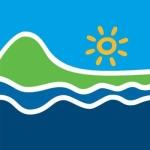Local surfers to give surf break knowledge
Bay of Plenty Regional Council and Gisborne District Council want to find out more about the Bay’s great surf breaks from the locals.
Two workshops have been organised in January to talk to surfers about their favourite surf breaks and what makes them important. Bailey Peryman from Lincoln University is working with the two councils on research aimed at identifying the region’s important surf breaks.
The workshops will be held at Mount Maunganui surf club on 12 January from 6.30pm to 8pm and Bay of Plenty Regional Council offices in Whakatāne on 13 January from 6.30pm to 8pm.
But the study is not just about surf; it aims to increase understanding about the value of all types of recreation activities associated with surf breaks and where those values may be threatened by other uses of the coast.
The best of the country’s surf breaks have just been protected under law in the New Zealand Coastal Policy Statement, which came into effect earlier this month. Kiwi surfers mobilised to protect 19 world-class surf breaks - 13 in the North Island and six in the South which rank 10/10 in the local surfing encyclopaedia, the Wavetrack New Zealand Surfing Guide. No Bay of Plenty surf breaks are currently included.
“This study gives us an opportunity to better understand the place of surf breaks in the Bay.
“We know that surfers are protective of their favourite breaks, but we hope they are willing to be involved. We need their help in understanding the values and issues associated with surf breaks, which are part of the natural character of the coast.”
Mr Peryman said surfers with local knowledge were invaluable in giving feedback on the issues facing iconic surf breaks and the study would include as many views as possible. The information would be developed into a guide to how the effects of development on surf breaks could be assessed.
The study aims to get surfers and all beach goers thinking about the processes and dynamics that make our coastal environment. Raising awareness about coastal policy and defining people’s values can help everyone take some responsibility for their own patch,” he said.
“This is an important step in protecting what we value about any environment.”
